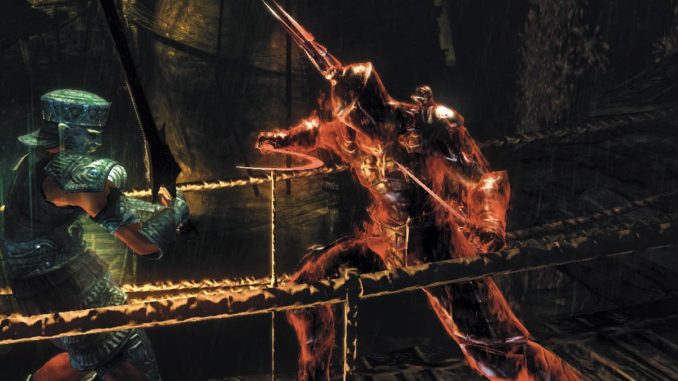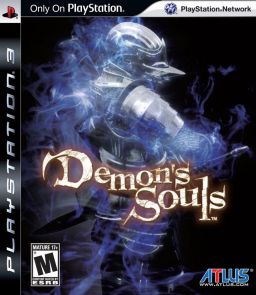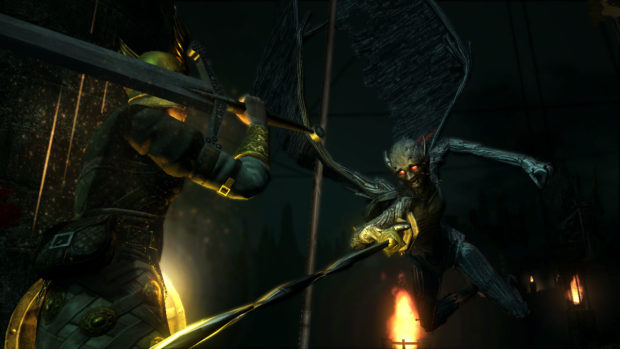
 With Dark Souls Remastered just a couple of weeks away it seems appropriate to look at the first true entry in this amazing franchise. Demon’s Souls, released on October 6, 2009, was a PlayStation 3 exclusive that pushed the boundaries of what the genre could achieve. A blend of roguelike role-playing action and gothic horror, Demon’s Souls brought players to the fantasy medieval inspired landscape called Boletaria. With its combination of online player vs player gameplay and deep customization character classes, Demon’s Souls epitomizes the high fantasy that few like Tolkein were only able to imagine. Developed by Hidetaka Miayazaki and published by Atlus Software, Demon’s Souls was groundbreaking in its artistry and depth of scope. But almost a decade later, this critically acclaimed entry in the souls series has received little coverage when compared to its predecessors. Now more then ever is the time for an expose on how groundbreaking Demon’s Souls is, especially since the PlayStation 3 is in the twilight of its existence.
With Dark Souls Remastered just a couple of weeks away it seems appropriate to look at the first true entry in this amazing franchise. Demon’s Souls, released on October 6, 2009, was a PlayStation 3 exclusive that pushed the boundaries of what the genre could achieve. A blend of roguelike role-playing action and gothic horror, Demon’s Souls brought players to the fantasy medieval inspired landscape called Boletaria. With its combination of online player vs player gameplay and deep customization character classes, Demon’s Souls epitomizes the high fantasy that few like Tolkein were only able to imagine. Developed by Hidetaka Miayazaki and published by Atlus Software, Demon’s Souls was groundbreaking in its artistry and depth of scope. But almost a decade later, this critically acclaimed entry in the souls series has received little coverage when compared to its predecessors. Now more then ever is the time for an expose on how groundbreaking Demon’s Souls is, especially since the PlayStation 3 is in the twilight of its existence.
Plot
Taking place in the fantastical macabre setting of Boletaria, Demon’s Souls introduces players to a land wrapped in turmoil brought upon by its power-hungry ruler King Allant XII. Through his madness, King Allant harnesses the power of the demon soul crystal to grant himself absolute control over his dominion. Suddenly after utilizing the dark ritual, a dense fog engulfs the kingdom of Boletaria and all its inhabitants. Trapped within this malevolent energy, King Allant inadvertently summons the demon lord known as The Old One from The Nexus. As The Old One takes charge of Allant’s dominion, the dense fog surrounding the landscape grows thicker with hordes of monsters ravaging its citizens.
Amongst all this chaos, bands of heroes take up arms to defend the Kingdom of Boletaria. Many have fallen from bravery while other warriors succumbed to the power of the demon’s soul, thus dwindling their numbers giving free reign to the Demon Lord. Players take control of one of these soldiers of light, whom after breaching the thick fog is killed in combat and then resurrected in the Nexus realm. It is at this point that the protagonist’s true journey begins as he/she must battle their way through endless demons en route to the final confrontation with The Old One. As you slay through these monsters, players realize that most level bosses are the monstrous incarnations of the fabled Round Table Knights. From the Boletarian Palace to the Valley of Defilement, Demon’s Souls entire story takes place within the war-torn landscape of Boletaria. But even with its conventional plot, Demon’s Souls is as brilliant now as it was back in 2009 mostly because of its character development and gameplay mechanics.
Gameplay
Demon’s Souls implements a third person real-time battle system as its main instrument of exposition. But unlike other mindless hack n’ slash adventures, this first incarnation in the souls’ franchise had some unusual gameplay choices that rendered it a cut above the rest. Demon’s Souls was a roguelike RPG in the truest sense, meaning that if a player died he had to start from the beginning of a level losing all that he/she acquired. But unlike other titles in this genre, players had to recapture their “soul essences” rather than the usual gold or equipment. These soul essences were the main source of currency that allowed heroes to purchase weapons or character upgrades throughout the game. As players kill demons they acquire these soul orbs but if you fall during combat you must begin anew and reclaim your dropped soul orbs.
This soul mechanic system was a complete divergence from other traditional RPG franchises like Dragon Quest or Final Fantasy that separated the function of enemy loot from character upgrades. Demon’s Souls, on the other hand, combines the functionality of these orbs, giving it greater significance once you die. This forces players to retrace their steps in order to recapture their fallen soul orbs. The dual functionality of this function, that of character upgrades and currency, gives each level of Demon’s Souls greater replay value with a stronger emphasis on level variation through repetition. Demon’s Souls was novel in this approach, not relying solely on looting and level grinding like fantasy games in the past had done.
 Another major innovation inherent to Demon’s Souls is its combat system. Rather than implementing a simple tit for tat fighting mechanic, the developers stressed the importance of realism during battle sequences through stamina stats and fatigue. Prior to Demon’s Souls, console RPG’s allowed players to grind endlessly through volumes of enemy encounters without a protagonist’s stamina being a factor. By incorporating stamina stats into combat, Demon’s Souls forces players to think strategically before encountering an enemy. In this way, Demon’s Souls plays more like a PC RPG rather than a typical console adventure title. Miyazaki gave console gamers a glimpse into the world of PC RPGs that had never been done before.
Another major innovation inherent to Demon’s Souls is its combat system. Rather than implementing a simple tit for tat fighting mechanic, the developers stressed the importance of realism during battle sequences through stamina stats and fatigue. Prior to Demon’s Souls, console RPG’s allowed players to grind endlessly through volumes of enemy encounters without a protagonist’s stamina being a factor. By incorporating stamina stats into combat, Demon’s Souls forces players to think strategically before encountering an enemy. In this way, Demon’s Souls plays more like a PC RPG rather than a typical console adventure title. Miyazaki gave console gamers a glimpse into the world of PC RPGs that had never been done before.
One area of gameplay which receives mixed criticism is Demon’s Souls online components. While it was interesting to see the actions of previous players appear as ghosts in each level, the multiplayer aspects left a lot to be desired. Questing was only allowed for players with the same level of experience, condemning new heroes to venture into the land of Boletaria with other novices. This restrictive online policy hampered the multiplayer aspects of Demon’s Souls, delineating the title to a narrow single player journey with only slight nuances of party questing as opposed to the more communicative gameplay inherent to most other RPGs.
This limitation hampers the multiplayer experience that gamers could have had with such a vibrant landscape as Boletaria. Here is one instance where Demon’s Souls could have pushed the envelope or at least followed the gameplay trend it aimed to emulate in PC RPGs. But in the end, Atlas Software gave fans something new that set the bar for the franchise Demon’s souls was about to give rise to.
Demon’s Souls and its Legacy
While Demon’s Souls was criticized for its lack of true multiplayer functionality, weak storyline, and extremely difficult level design and enemy encounters, this is still a title that deserves recognition nearly a decade later. While first-person shooters were all about action and mindless button mashing, Demon’s Souls gave players a new way to approach battles much like a chess player figuring out his/her next move. With a macabre setting and grotesque character animations, Miyazaki along with his development team created a world that felt like the hybrid offspring of J.R. Tolkien and H.P. Lovecraft. Few releases in the RPG genre are able to overcome a weak plot by consuming players in a world that is as meticulous and all-encompassing as Demon’s Souls is. It seems odd that its spiritual successor, Dark Souls is receiving a remastering when all players have to do is look back at the entry before and take part in all its breathtaking gothic splendor. Just imagine a revamping of Dark souls for current gen consoles with a fully realized online quest system and polished graphics would look like on the Xbox One or PlayStation 4. But in the era of remakes Demon’s Souls absence is mind-boggling when one considers its breadth of scope almost a decade ago. Even with all its minor flaws, Miyazaki created a masterpiece that was able to transcend the limitations of its hardware and still hold relevance a decade later.
[embedyt] https://www.youtube.com/watch?v=FRnIyXvonAU[/embedyt]


Leave a Reply